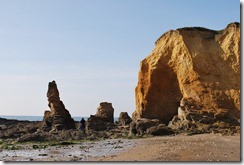Recently re-found, massive amounts of pottery stuff from Portugal, found in Plymouth, some on its way to Newfoundland.
Sarah Newstead – interesting biog
http://leicester.academia.edu/SarahNewsteadI expect there’s a few more gems in amongst the dross
http://www.academia.edu/Documents/in/An ... chaeology_Plymouth Arch.Soc. is hosting a talk - 7th April 2014
NEWFOUNDLAND AND COD AND PORTUGUESE POTTERY
SITUATING PLYMOUTH IN THE EARLY MODERN NORTH ATLANTIC WORLD
Sarah Newstead is a PhD research student in the School of Archaeology and Ancient History at Leicester University. Her current research is focussed on the export of Portuguese coarsewares to England and Newfoundland. In her talk she will describe how Plymouth became an important port for the trade with Portugal and with the Newfoundland cod fishery. She will explain how the two facets are tightly linked and gave rise to the unusual Portuguese ceramics found in excavations around Sutton Harbour; these ceramics now form the spectacular collection in Plymouth City Museum – a resource for further research.
http://www.plymarchsoc.org.uk/archaeologylectures.htmlI thought it was Brixham Trawlers that had the Newfoundland claim to fame? But anyway, here's another good example of old Phoenician trade routes, that just keep getting used. Heading north across the Bay of Biscay, with the
Tower of Hercules to light their way.
http://en.wikipedia.org/wiki/Tower_of_HerculesIf Portugese folks were willing to go all the way to Newfoundland just to get cod, no wonder some old maps show Ireland to be closer to Spain than Britain.
More work required on what Portugese folks = "Phoenicians"?
We're told
here that
Basque fishermen from Spain used potatoes as ships' stores for their voyages across the Atlantic in the 16th century, and introduced the tuber to western Ireland, where they landed to dry their cod.http://en.wikipedia.org/wiki/History_of_the_potatoSo Fish & Chips is a Basque/Breton invention?

